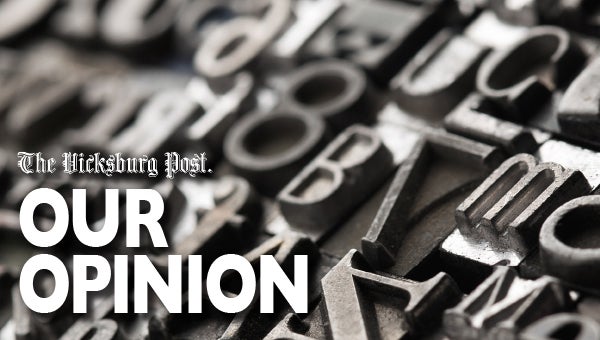Laws of motion prove voters can effect change
Published 2:29 pm Tuesday, August 27, 2019
When it comes to politics and elections, there is only so much analysis that can be done to understand how voters vote, why candidates campaign the way they do, and how the results become the results.
There are polls and trackers to help forecast an outcome. There are marketing strategies put together to get the message out. And then, on election day, all of that is thrown completely out the window and left to the voters — an amazingly diverse group of people, with their own views, their own opinions and their own agenda.
For generations, there have been those who have analyzed elections, broken down results and compared those to the pre-election polls and forecasting methods. Complete courses of study have been dedicated to this, earning those who study politics degrees and doctorates, but it still comes down to the voter.
We could even have a little fun and apply the fundamentals of physics to elections.
Sir Isaac Newton, in 1686, compiled and presented his three laws of motion — the basics of physics — in the “Principia Mathematica Philosophiae Naturalis.” And of those three laws, there are two that could be applied to elections, voting and politics.
The first law of motion is, “every object persists in its state of rest or uniform motion in a straight line unless it is compelled to change that state by forces impressed on it.”
In today’s terms, an object will either remain sitting unless something — or someone — moves it and an object, when in motion, will continue in a straight line until something — or someone — changes its direction.
For voters, they are that “someone.” With votes that are cast — or those not cast by voters too careless to take part in the process — voters have the chance to move the process along or change the course.
Voters, when pooled together in big enough numbers, can force action by their elected officials. Or, if the action is not to their liking, they can vote to change the direction of their leadership, oftentimes changing those in leadership.
While the second law of motion is interesting, not even our wordsmiths and creative thinking could use it to apply to elections, but the third can be used.
The third law of motion states, “for every action, there is an equal and opposite reaction.”
Elections have consequences, and unfortunately, those are not often immediately felt or understood. It takes months, years even, to realize a vote cast for someone was the right or wrong decision.
But, that is the beauty of elections.
In our country, we have the right to change the course of our community, our state and our nation, with a simple vote. We can signal to our elected leaders that their decisions have consequences and that we — if needed — can compel change. As voters, if needed, we are the “equal and opposite reaction” to our leaders.
Voters hold the power, whether or not elected leaders understand or appreciate that power.
Every few years, whether it is local elections or those held at the state or national level, registered voters have the chance to apply the theories and laws founded by Sir Isaac Newton 333 years ago and change our direction. Don’t miss the chance.




